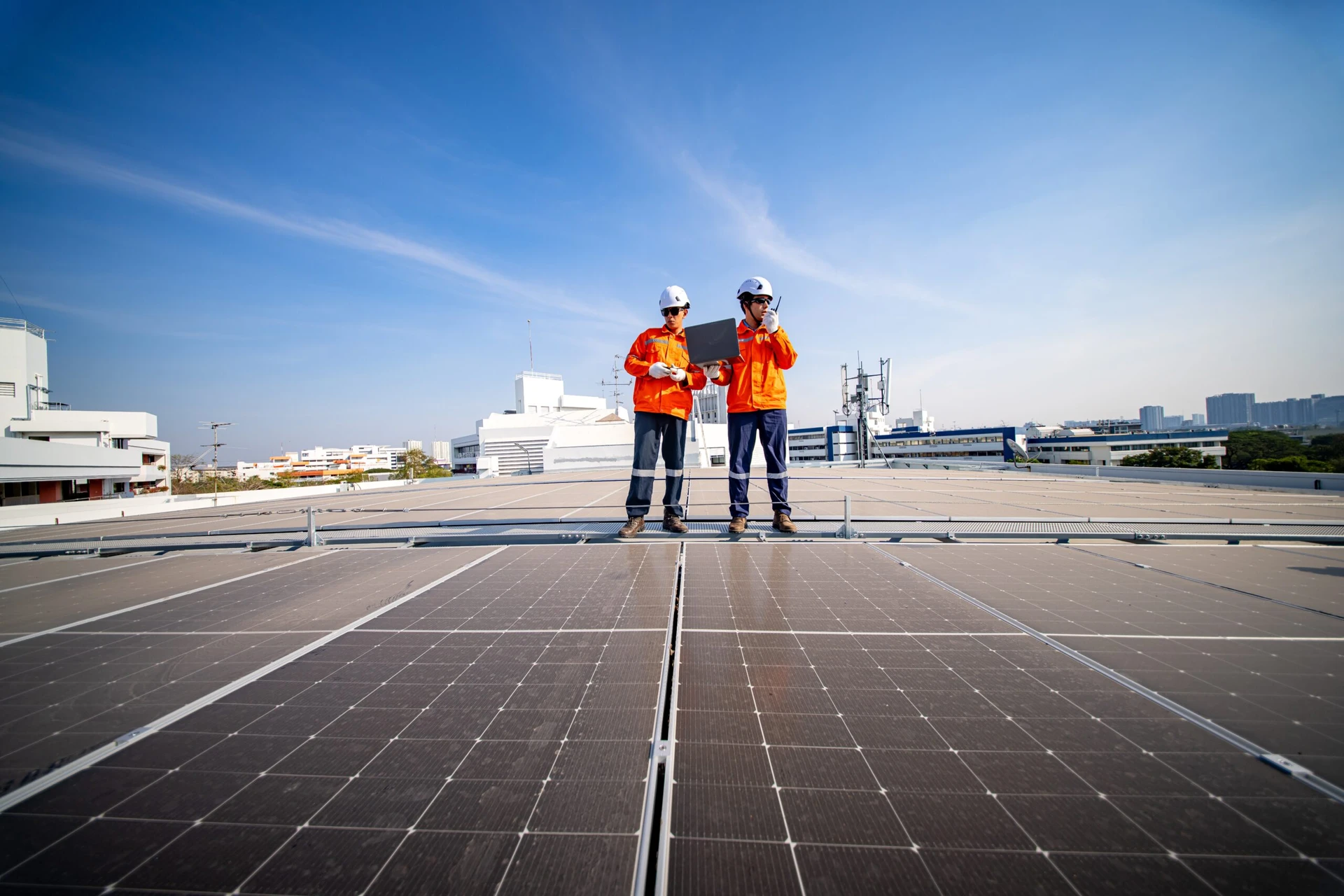
Solar PV and BESS Service Company Business Energy Scotland SME Loan Scheme Support
Client
Solar PV and BESS Service Company
Location
Scotland
Comprehensive technical feasibility study to assess the viability of on-site renewable energy generation and battery storage technologies through Business Energy Scotland SME Loan Scheme
As part of Arthian’s continued support to Business Energy Scotland, a SME loan scheme promoting low carbon technologies to clients, the company, a Glasgow‑based, family-run specialist in solar PV and battery energy storage systems (BESS), servicing both domestic and commercial clients across Scotland, opted to apply through this scheme. We delivered a comprehensive technical feasibility study to assess the viability of on-site renewable energy generation and battery storage technologies. The client’s aim was to reduce operational electricity costs and carbon emissions through strategic investment in solar PV and/or battery systems. The project also considered constraints linked to roof structure, DNO approvals, and system maintenance.
The company operates from a light industrial premises consisting of a warehouse. The premises is leased on a three-year basis, with no plans to relocate. Interest was expressed in installing a low-carbon generation system with multiple alternatives to reduce electricity cost. There was also interested in a battery system that could exploit time-of-use electricity tariffs by charging off-peak and discharging at peak times.


The Solution
Arthian evaluated three technical options and provided a detailed comparison based on cost, energy savings, payback period, and operational considerations. The approach involved gathering the client’s annual billing data to create an electricity profile. As half-hourly data (HHD) was not available for the site, benchmarked data from similar buildings with HHD was used to derive a representative annual HHD profile. This dataset was imported into PVSol, where each alternative was modelled using 3D design tools. PVSol outputs, including annual generation, battery performance, and grid export volumes, were combined with known unit rates to calculate cost savings, emissions reduction, and payback periods.
1. Solar PV System (5.4 kWp)
A full technical feasibility assessment for the integration of a rooftop 5.4 kWp solar PV system was carried out. The design included twelve 450 W SunPower modules arranged across south, southwest, and southeast roof sections with three grid-tie inverters. The annual estimated generation was 4,440 kWh, with 3,272 kWh used on-site and 1,168 kWh exported to the grid under a Smart Export Guarantee (SEG) tariff of 10 p/kWh.
2. Solar PV System with Battery Storage (5.4 kWp + 13.5 kWh)
The second scenario assessed the same PV configuration with the addition of a Tesla Powerwall 2.0 (13.5 kWh) battery system. This alternative allowed a higher portion of the PV generation to be used on-site, thus reducing exports and increasing savings. Annual energy use from the PV system increased to 3,937 kWh with higher self-consumption, improving the overall return on investment.
3. Battery-Only System (13.5 kWh)
The third scenario explored a standalone Tesla Powerwall system used for load shifting via time-of-use electricity pricing. The system was modelled to charge during off-peak periods and discharge during peak demand. No new energy was generated, but cost savings were achieved by reducing electricity drawn at peak rates.
Key Activities
- Planning and tariff data collection – Obtained client utility data and reviewed current energy tariff structures.
- Derivation of site-specific HH profile using benchmarked data – Created a representative HH profile using similar site data.
- Import of electricity profile into PVSol for modelling – Used PVSol software to simulate energy generation and consumption.
- 3D array layout design and optimisation – Designed PV array positioning and shading analysis in 3D.
- Battery charge and discharge strategy modelling – Simulated energy storage usage patterns to optimise savings.
- Smart Export Guarantee (SEG) revenue assessment – Estimated export revenue from excess generation under SEG tariffs.
- Financial modelling: cost estimates, payback, and ROI analysis – Calculated system costs, annual savings, and payback periods.
- Review of installation risks and grid connection considerations – Identified potential installation risks and DNO requirements.

Outcomes
The standalone solar PV system offered a strong balance between cost and return, generating 3,272 kWh of on-site energy use per year and achieving a 15-year payback. The PV + battery scenario further increased on-site energy utilisation to 3,937 kWh, improving savings but extending the payback to 22 years due to the higher capital cost. The battery-only system, while beneficial for load shifting, yielded lower savings and the longest payback period at 28 years, with no direct carbon or energy savings. Consideration should also be given to the potential need for DNO approval and equipment replacement costs over the system lifecycle.
Our Latest Projects
Get in Touch
We’d love to hear from you – whether you have a question, a project in mind, want to explore job opportunities, or just want to say hello.

